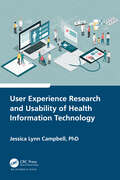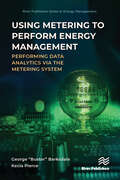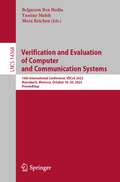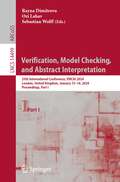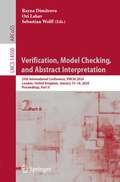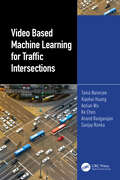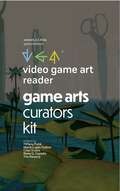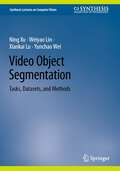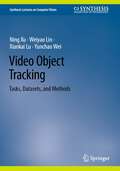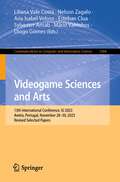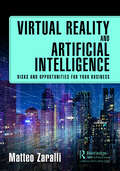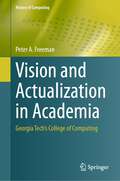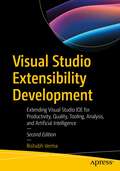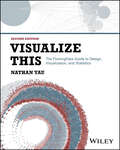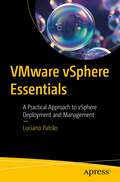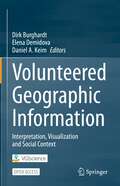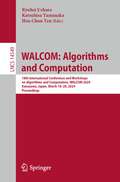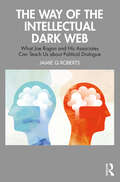- Table View
- List View
User Experience Research and Usability of Health Information Technology
by Jessica Lynn CampbellHealth information technology (HIT) is a critical component of the modern healthcare system. Yet to be effective and safely implemented in healthcare organizations and physicians and patients’ lives, it must be usable and useful. User Experience (UX) research is required throughout the full system design lifecycle of HIT products, which involve a user-centered and human- centered approach. This book discusses UX research frameworks, study designs, methods, data-analysis techniques, and a variety of data collection instruments and tools that can be used to conduct UX research in the healthcare space, all of which involve HIT and digital health. This book is for academics and scholars to be used to design studies for graduate dissertation work, in independent research, or as a textbook for UX/usability courses in health informatics or related health information and communication courses. This book is also useful for UX practitioners because it provides guidance on how to design a user research or usability study and focuses on leveraging a mixed- methods approach, including step-by-step by instructions and best practices for conducting: Field studies Interviews Focus groups Diary studies Surveys Heuristic evaluation Cognitive walkthrough Think aloud A plethora of standardized surveys and retrospective questionnaires (SUS, Post-study System Usability Questionnaire (PSSUQ)) are also included. UX researchers and healthcare professionals will gain an understanding of how to design a rigorous, yet feasible study that generates useful insights to inform the design of usable HIT. Everything from consent forms to how many participants to include in a usability study has been covered in this book. The author encourages user-centered design (UCD), mixed-methods, and collaboration amongst interdisciplinary teams. Knowledge from many inter-related disciplines, like psychology, technical communication (TC), and human-computer interaction (HCI), together with experiential knowledge from experts is offered throughout the text.
User Experience Research and Usability of Health Information Technology
by Jessica Lynn CampbellHealth information technology (HIT) is a critical component of the modern healthcare system. Yet to be effective and safely implemented in healthcare organizations and physicians and patients’ lives, it must be usable and useful. User Experience (UX) research is required throughout the full system design lifecycle of HIT products, which involve a user-centered and human- centered approach. This book discusses UX research frameworks, study designs, methods, data-analysis techniques, and a variety of data collection instruments and tools that can be used to conduct UX research in the healthcare space, all of which involve HIT and digital health. This book is for academics and scholars to be used to design studies for graduate dissertation work, in independent research, or as a textbook for UX/usability courses in health informatics or related health information and communication courses. This book is also useful for UX practitioners because it provides guidance on how to design a user research or usability study and focuses on leveraging a mixed- methods approach, including step-by-step by instructions and best practices for conducting: Field studies Interviews Focus groups Diary studies Surveys Heuristic evaluation Cognitive walkthrough Think aloud A plethora of standardized surveys and retrospective questionnaires (SUS, Post-study System Usability Questionnaire (PSSUQ)) are also included. UX researchers and healthcare professionals will gain an understanding of how to design a rigorous, yet feasible study that generates useful insights to inform the design of usable HIT. Everything from consent forms to how many participants to include in a usability study has been covered in this book. The author encourages user-centered design (UCD), mixed-methods, and collaboration amongst interdisciplinary teams. Knowledge from many inter-related disciplines, like psychology, technical communication (TC), and human-computer interaction (HCI), together with experiential knowledge from experts is offered throughout the text.
Using Metering to Perform Energy Management: Performing Data Analytics via the Metering System (River Publishers Series in Energy Management)
by George “Buster” Barksdale Kecia PierceThis book covers many helpful analysis tools and processes to assist energy managers (EMs) administer their energy program through their meter management system (MMS). These tools and the corresponding techniques offer opportunities for the EM to optimize their time. If fully utilized, the MMS will allow an EM to reduce field time significantly, as they can perform most of the energy management pre-analysis, benchmarking, data analysis and, in many cases, complete the task of performing a virtual audit remotely from their office.The book covers many instructional areas that are, for the most part, only offered by consulting groups and software vendors as services. Those two groups offer their services for fees and therefore do not publish their ideas or best practices for commercial use. Software vendors provide software analytics whose functional aspects are addressed by our descriptions of the essential tasks in each chapter. This book allows EMs to expand their knowledge of software capabilities by viewing other best practices. Consulting groups offer services in a few areas: basic benchmarking and monitoring-based commissioning (MBCx). These services are considered essential to energy management but are generally implemented as on-site services, which, due to their nature, are much more expensive than a monitoring commissioning (MCx) solution. Monitoring commissioning, in contrast to MBCx, is purely done at the monitoring level and allows you to manage the critical energy measures that comprise the majority of the savings, but without getting into the field testing.Benchmarking is covered much deeper in the book as we show how to benchmark each system within a building. The benchmarking sections show how to automatically analyze each system’s usage into a separate benchmark for baseload, lighting, AC, and fan/pump systems. These systems produce benchmarks so EMs can compare by site, category type, climate zone, etc. We also introduce benchmarks that enable the EM to utilize tools to determine the performance of each system and which are their most significant energy users. These analytics functions are covered to produce results that identify potential energy savings for each energy system.
Using Metering to Perform Energy Management: Performing Data Analytics via the Metering System (River Publishers Series in Energy Management)
by George “Buster” Barksdale Kecia PierceThis book covers many helpful analysis tools and processes to assist energy managers (EMs) administer their energy program through their meter management system (MMS). These tools and the corresponding techniques offer opportunities for the EM to optimize their time. If fully utilized, the MMS will allow an EM to reduce field time significantly, as they can perform most of the energy management pre-analysis, benchmarking, data analysis and, in many cases, complete the task of performing a virtual audit remotely from their office.The book covers many instructional areas that are, for the most part, only offered by consulting groups and software vendors as services. Those two groups offer their services for fees and therefore do not publish their ideas or best practices for commercial use. Software vendors provide software analytics whose functional aspects are addressed by our descriptions of the essential tasks in each chapter. This book allows EMs to expand their knowledge of software capabilities by viewing other best practices. Consulting groups offer services in a few areas: basic benchmarking and monitoring-based commissioning (MBCx). These services are considered essential to energy management but are generally implemented as on-site services, which, due to their nature, are much more expensive than a monitoring commissioning (MCx) solution. Monitoring commissioning, in contrast to MBCx, is purely done at the monitoring level and allows you to manage the critical energy measures that comprise the majority of the savings, but without getting into the field testing.Benchmarking is covered much deeper in the book as we show how to benchmark each system within a building. The benchmarking sections show how to automatically analyze each system’s usage into a separate benchmark for baseload, lighting, AC, and fan/pump systems. These systems produce benchmarks so EMs can compare by site, category type, climate zone, etc. We also introduce benchmarks that enable the EM to utilize tools to determine the performance of each system and which are their most significant energy users. These analytics functions are covered to produce results that identify potential energy savings for each energy system.
Verification and Evaluation of Computer and Communication Systems: 16th International Conference, VECoS 2023, Marrakech, Morocco, October 18–20, 2023, Proceedings (Lecture Notes in Computer Science #14368)
by Belgacem Ben Hedia Yassine Maleh Moez KrichenThis book constitutes the refereed proceedings of the 16th International Conference on Verification and Evaluation of Computer and Communication Systems, VECoS 2023, held in Marrakech, Morocco, during October 18–20, 2023. The 12 full papers included in this book were carefully reviewed and selected from 36 submissions. The topics presented covered a range of subjects, including approaches to improving the scalability and efficiency of formal verification and their applications to blockchain, smart contracts and neural networks.
Verification, Model Checking, and Abstract Interpretation: 25th International Conference, VMCAI 2024, London, United Kingdom, January 15–16, 2024, Proceedings, Part I (Lecture Notes in Computer Science #14499)
by Rayna Dimitrova Ori Lahav Sebastian WolffThe two-volume set LNCS 14499 and 14500 constitutes the proceedings of the 25th International Conference on Verification, Model Checking, and Abstract Interpretation, VMCAI 2024, which took place in London, Ontario, Canada, in January 2024. The 30 full papers presented in the proceedings were carefully reviewed and selected from 74 submissions. They were organized in topical sections as follows:Part I: Abstract interpretation; infinite-state systems; model checking and synthesis; SAT, SMT, and automated reasoning; Part II: Concurrency; neural networks; probabilistic and quantum programs; program and system verification; runtime verification; security and privacy.
Verification, Model Checking, and Abstract Interpretation: 25th International Conference, VMCAI 2024, London, United Kingdom, January 15–16, 2024, Proceedings, Part II (Lecture Notes in Computer Science #14500)
by Rayna Dimitrova Ori Lahav Sebastian WolffThe two-volume set LNCS 14499 and 14500 constitutes the proceedings of the 25th International Conference on Verification, Model Checking, and Abstract Interpretation, VMCAI 2024, which took place in London, Ontario, Canada, in January 2024. The 30 full papers presented in the proceedings were carefully reviewed and selected from 74 submissions. They were organized in topical sections as follows:Part I: Abstract interpretation; infinite-state systems; model checking and synthesis; SAT, SMT, and automated reasoning; Part II: Concurrency; neural networks; probabilistic and quantum programs; program and system verification; runtime verification; security and privacy;
Video Based Machine Learning for Traffic Intersections
by Tania Banerjee Xiaohui Huang Aotian Wu Ke Chen Anand Rangarajan Sanjay RankaVideo Based Machine Learning for Traffic Intersections describes the development of computer vision and machine learning-based applications for Intelligent Transportation Systems (ITS) and the challenges encountered during their deployment. This book presents several novel approaches, including a two-stream convolutional network architecture for vehicle detection, tracking, and near-miss detection; an unsupervised approach to detect near-misses in fisheye intersection videos using a deep learning model combined with a camera calibration and spline-based mapping method; and algorithms that utilize video analysis and signal timing data to accurately detect and categorize events based on the phase and type of conflict in pedestrian-vehicle and vehicle-vehicle interactions. The book makes use of a real-time trajectory prediction approach, combined with aligned Google Maps information, to estimate vehicle travel time across multiple intersections. Novel visualization software, designed by the authors to serve traffic practitioners, is used to analyze the efficiency and safety of intersections. The software offers two modes: a streaming mode and a historical mode, both of which are useful to traffic engineers who need to quickly analyze trajectories to better understand traffic behavior at an intersection. Overall, this book presents a comprehensive overview of the application of computer vision and machine learning to solve transportation-related problems. Video Based Machine Learning for Traffic Intersections demonstrates how these techniques can be used to improve safety, efficiency, and traffic flow, as well as identify potential conflicts and issues before they occur. The range of novel approaches and techniques presented offers a glimpse of the exciting possibilities that lie ahead for ITS research and development. Key Features: Describes the development and challenges associated with Intelligent Transportation Systems (ITS) Provides novel visualization software designed to serve traffic practitioners in analyzing the efficiency and safety of an intersection Has the potential to proactively identify potential conflict situations and develop an early warning system for real-time vehicle-vehicle and pedestrian-vehicle conflicts
Video Based Machine Learning for Traffic Intersections
by Tania Banerjee Xiaohui Huang Aotian Wu Ke Chen Anand Rangarajan Sanjay RankaVideo Based Machine Learning for Traffic Intersections describes the development of computer vision and machine learning-based applications for Intelligent Transportation Systems (ITS) and the challenges encountered during their deployment. This book presents several novel approaches, including a two-stream convolutional network architecture for vehicle detection, tracking, and near-miss detection; an unsupervised approach to detect near-misses in fisheye intersection videos using a deep learning model combined with a camera calibration and spline-based mapping method; and algorithms that utilize video analysis and signal timing data to accurately detect and categorize events based on the phase and type of conflict in pedestrian-vehicle and vehicle-vehicle interactions. The book makes use of a real-time trajectory prediction approach, combined with aligned Google Maps information, to estimate vehicle travel time across multiple intersections. Novel visualization software, designed by the authors to serve traffic practitioners, is used to analyze the efficiency and safety of intersections. The software offers two modes: a streaming mode and a historical mode, both of which are useful to traffic engineers who need to quickly analyze trajectories to better understand traffic behavior at an intersection. Overall, this book presents a comprehensive overview of the application of computer vision and machine learning to solve transportation-related problems. Video Based Machine Learning for Traffic Intersections demonstrates how these techniques can be used to improve safety, efficiency, and traffic flow, as well as identify potential conflicts and issues before they occur. The range of novel approaches and techniques presented offers a glimpse of the exciting possibilities that lie ahead for ITS research and development. Key Features: Describes the development and challenges associated with Intelligent Transportation Systems (ITS) Provides novel visualization software designed to serve traffic practitioners in analyzing the efficiency and safety of an intersection Has the potential to proactively identify potential conflict situations and develop an early warning system for real-time vehicle-vehicle and pedestrian-vehicle conflicts
Video Game Art Reader: Volume 5: The Game Art Curators Kit
by Tiffany FunkMany ambitious and experimental game forms don't fit into the digital download or retail distribution channels that support so-called “traditional” video games. Instead, these games are supported by a new global movement in video game curation. This special edition of the Video Game Art Reader features an international collaboration of video game professionals working together to create a resource for game exhibition organization, design, and curation. Professionals, artists, and others who organize and curate video game exhibitions and events act within a rhizomatic network of methods, missions, and goals. They establish organizations like galleries, collectives, and non-profits. Methods of sharing video games as critical cultural phenomena continue to evolve and expand. Conceived during the first meeting of GAIA (Game Arts International Assembly), the Game Art Curators Kit documents and shares the collective experience of an international network of video game curators and organizers. Sharing practical tips on everything from accessibility to preservation, the book also serves as a guide to support a new global movement in video game curation.
Video Object Segmentation: Tasks, Datasets, and Methods (Synthesis Lectures on Computer Vision)
by Ning Xu Weiyao Lin Xiankai Lu Yunchao WeiThis book provides a thorough overview of recent progress in video object segmentation, providing researchers and industrial practitioners with thorough information on the most important problems and developed technologies in the area. Video segmentation is a fundamental topic for video understanding in computer vision. Segmenting unique objects in a given video is useful for a variety of applications, including video conference, video editing, surveillance, and autonomous driving. Given the revolution of deep learning in computer vision problems, numerous new tasks, datasets, and methods have been recently proposed in the domain of segmentation. The book includes these recent results and findings in large-scale video object segmentation as well as benchmarks in large-scale human-centric video analysis in complex events. The authors provide readers with a comprehensive understanding of the challenges involved in video object segmentation, as well as the most effective methods for resolving them.
Video Object Tracking: Tasks, Datasets, and Methods (Synthesis Lectures on Computer Vision)
by Ning Xu Weiyao Lin Xiankai Lu Yunchao WeiThis book provides a thorough overview of recent progress in video object tracking, allowing researchers and industrial practitioners to gain a better understanding of the most important problems and developed technologies in the area. Video tracking is a key research area in computer vision and aims to track unique objects in a given video, which are useful for various applications such as video conference, video editing, surveillance, and autonomous driving. This book begins with an introduction to the task of video object tracking, including the most common problem settings. Given the revolution of deep learning in computer vision problems, numerous new tasks, datasets, and methods have been recently proposed in the domain of video tracking. The book includes these recent results as well as benchmarks in large-scale human-centric video analysis in complex events.
Videogame Sciences and Arts: 13th International Conference, VJ 2023, Aveiro, Portugal, November 28–30, 2023, Revised Selected Papers (Communications in Computer and Information Science #1984)
by Liliana Vale Costa Nelson Zagalo Ana Isabel Veloso Esteban Clua Sylvester Arnab Mário Vairinhos Diogo GomesThis book constitutes the revised selected papers of the 13th International Conference on Videogame Sciences and Arts, VJ 2023, held in Aveiro, Portugal, during November 28–30, 2023. The 17 full papers and the 6 short papers presented were carefully reviewed and selected from 64 submissions. They are organized in topical sections named: game experience and evaluation; game-based learning and edutainment; games and culture; game design and development.
Virtual Reality and Artificial Intelligence: Risks and Opportunities for Your Business
by Matteo ZaralliTechnology is rapidly transforming the way people learn and train, and the integration of virtual reality (VR) and artificial intelligence (AI) could be the next big breakthrough. With the advent of Web 3.0 and the Metaverse, there are endless possibilities for creating immersive and engaging learning environments. However, there is also a need to address the risks and challenges that these technologies present.This book explores the risks and opportunities of VR and AI for coaching and training, with an eye toward the emerging trends of Web 3.0 and the Metaverse. Coaching and training have become increasingly important for companies seeking to develop and retain talent. With the advent of VR and AI technology, there is an opportunity to create immersive and engaging learning environments that could greatly enhance the learning experience. However, there are also risks associated with the use of these technologies, such as data privacy and cybersecurity.This book provides an in-depth analysis of the risks and opportunities of VR and AI for coaching and training, to help startup and business executives understand how to use these technologies responsibly and effectively. We need a new perspective. The book discusses the intersection of various major subjects and topics: business, innovation, technology, and philosophy in terms of critical thinking. The transition we are experiencing through this new Intelligent Revolution is very important, and soon everyone will witness the shift from e-learning to v-learning.
Virtual Reality and Artificial Intelligence: Risks and Opportunities for Your Business
by Matteo ZaralliTechnology is rapidly transforming the way people learn and train, and the integration of virtual reality (VR) and artificial intelligence (AI) could be the next big breakthrough. With the advent of Web 3.0 and the Metaverse, there are endless possibilities for creating immersive and engaging learning environments. However, there is also a need to address the risks and challenges that these technologies present.This book explores the risks and opportunities of VR and AI for coaching and training, with an eye toward the emerging trends of Web 3.0 and the Metaverse. Coaching and training have become increasingly important for companies seeking to develop and retain talent. With the advent of VR and AI technology, there is an opportunity to create immersive and engaging learning environments that could greatly enhance the learning experience. However, there are also risks associated with the use of these technologies, such as data privacy and cybersecurity.This book provides an in-depth analysis of the risks and opportunities of VR and AI for coaching and training, to help startup and business executives understand how to use these technologies responsibly and effectively. We need a new perspective. The book discusses the intersection of various major subjects and topics: business, innovation, technology, and philosophy in terms of critical thinking. The transition we are experiencing through this new Intelligent Revolution is very important, and soon everyone will witness the shift from e-learning to v-learning.
Vision and Actualization in Academia: Georgia Tech’s College of Computing (History of Computing)
by Peter A. FreemanAlthough difficult, change in academic structures is necessary today, especially in fast-changing fields today such as biology, computing, management, the social sciences, and others. This includes changes within existing organizations as well as creation of new structures and reorganizations or eliminations of older ones. This narrative attempts first to document the historical rise of an organization, Georgia Tech’s College of Computing, that has touched and successfully changed the lives of thousands of people. Second, it aims to identify and explicate some of what has led to this widely acknowledged success. The book provides a chronological narrative that highlights major changes taken under each successive leader. These changes have built on one another, knowingly or otherwise, to create a growing organization that rivals in size and prominence longer established parts of the university. The case study, while of an academic organization focused on computing, provides general lessons applicable almost anywhere. Topics and features: Discusses the nature and uses of visions, both general and specificShows how visions can be used to drive specific actions and resource allocationsIllustrates the choice and use of enduring organizational principlesOutlines a simple strategic-planning method and its applicationIndicates results of this overall approach This book will be of interest to anyone interested in organizational change, especially in academia, and to those interested in Georgia Tech. It will also appeal to policymakers in education, government, and industry; as well as anyone interested in the historical growth of the computing milieu broadly. Peter A. Freeman was Founding Dean and Professor in the College of Computing at Georgia Tech from 1990 to 2002. Today he is an Emeritus Dean and Professor.
Visual Studio Extensibility Development: Extending Visual Studio IDE for Productivity, Quality, Tooling, Analysis, and Artificial Intelligence
by Rishabh VermaMaster Visual Studio extensibility for an enhanced Visual Studio IDE experience. This book is a comprehensive guide that covers every facet of developing, debugging, and publishing extensions that amplify your productivity, tooling, and analysis within the Visual Studio IDE. This new edition is updated for Visual Studio 2022, which is the latest and greatest version of Visual Studio. Since the last edition, Artificial Intelligence (AI) has taken the world by the storm. This revised edition demonstrates how AI can take your extensions to unparalleled heights using ChatGPT. The book begins with an introduction to the essential concepts of Visual Studio, including data structures and design patterns before diving into the fundamentals of the Visual Studio extensibility model. Here you will learn the anatomy of a VSIX and how extensions are discovered and loaded in Visual Studio. Next, you will explore the extensibility model and see how various extensions, such as menus, commands, and tool windows can be plugged into Visual Studio. Moving forward, you’ll cover developing VS extensions and how they can be made configurable by customizing the UI and options page, and you’ll learn to develop a VS extension that leverages ChatGPT. Next, you will see how to extend the most often used component of Visual Studio, the code editor, before creating your own sample code snippets and templates. This is followed by a demonstration of how to deploy extensions using continuous integration (CI). Finally, you will learn tips and tricks for Visual Studio and its extensibility, along with a few highly valuable extensions. After reading Visual Studio Extensibility Development, you will be able to develop, debug, customize, and deploy extensions in Visual Studio IDE. What You Will Learn Master the art of personalizing extensions through the creation of dedicated tools option pagesExtend commands, editor, and tool window of Visual StudioSeamlessly integrate artificial intelligence in Visual Studio extensionsCreate project templates, item templates, and code snippets to streamline your development processEnhance IntelliSense for your custom project needsPublish your extension in the Visual Studio marketplace Who This Book Is For Developers, Programmers, Engineers, Architects, Instructors, Innovators, Students and Technology enthusiasts leveraging Visual Studio IDE.
Visualize This: The FlowingData Guide to Design, Visualization, and Statistics
by Nathan YauOne of the most influential data visualization books—updated with new techniques, technologies, and examples Visualize This demonstrates how to explain data visually, so that you can present and communicate information in a way that is appealing and easy to understand. Today, there is a continuous flow of data available to answer almost any question. Thoughtful charts, maps, and analysis can help us make sense of this data. But the data does not speak for itself. As leading data expert Nathan Yau explains in this book, graphics provide little value unless they are built upon a firm understanding of the data behind them. Visualize This teaches you a data-first approach from a practical point of view. You'll start by exploring what your data has to say, and then you'll design visualizations that are both remarkable and meaningful. With this book, you'll discover what tools are available to you without becoming overwhelmed with options. You'll be exposed to a variety of software and code and jump right into real-world datasets so that you can learn visualization by doing. You'll learn to ask and answer questions with data, so that you can make charts that are both beautiful and useful. Visualize This also provides you with opportunities to apply what you learn to your own data. This completely updated, full-color second edition: Presents a unique approach to visualizing and telling stories with data, from data visualization expert Nathan Yau Offers step-by-step tutorials and practical design tips for creating statistical graphics, geographical maps, and information design Details tools that can be used to visualize data graphics for reports, presentations, and stories, for the web or for print, with major updates for the latest R packages, Python libraries, JavaScript libraries, illustration software, and point-and-click applications Contains numerous examples and descriptions of patterns and outliers and explains how to show them Information designers, analysts, journalists, statisticians, data scientists—as well as anyone studying for careers in these fields—will gain a valuable background in the concepts and techniques of data visualization, thanks to this legendary book.
Visualize This: The FlowingData Guide to Design, Visualization, and Statistics
by Nathan YauOne of the most influential data visualization books—updated with new techniques, technologies, and examples Visualize This demonstrates how to explain data visually, so that you can present and communicate information in a way that is appealing and easy to understand. Today, there is a continuous flow of data available to answer almost any question. Thoughtful charts, maps, and analysis can help us make sense of this data. But the data does not speak for itself. As leading data expert Nathan Yau explains in this book, graphics provide little value unless they are built upon a firm understanding of the data behind them. Visualize This teaches you a data-first approach from a practical point of view. You'll start by exploring what your data has to say, and then you'll design visualizations that are both remarkable and meaningful. With this book, you'll discover what tools are available to you without becoming overwhelmed with options. You'll be exposed to a variety of software and code and jump right into real-world datasets so that you can learn visualization by doing. You'll learn to ask and answer questions with data, so that you can make charts that are both beautiful and useful. Visualize This also provides you with opportunities to apply what you learn to your own data. This completely updated, full-color second edition: Presents a unique approach to visualizing and telling stories with data, from data visualization expert Nathan Yau Offers step-by-step tutorials and practical design tips for creating statistical graphics, geographical maps, and information design Details tools that can be used to visualize data graphics for reports, presentations, and stories, for the web or for print, with major updates for the latest R packages, Python libraries, JavaScript libraries, illustration software, and point-and-click applications Contains numerous examples and descriptions of patterns and outliers and explains how to show them Information designers, analysts, journalists, statisticians, data scientists—as well as anyone studying for careers in these fields—will gain a valuable background in the concepts and techniques of data visualization, thanks to this legendary book.
VMware vSphere Essentials: A Practical Approach to vSphere Deployment and Management
by Luciano PatrãoThis book fills a vacuum in the market for high-quality information on a VMware vSphere system and offers a thorough introduction to VMware virtualization. Written for novices and those seeking more information about vSphere, this book walks you through its key concepts and technology, such as vSphere infrastructure creation, maintenance, and performance for beginners and advanced users.You'll take a step-by-step approach to guarantee you grasp the fundamental concepts and practical procedures required to construct and manage virtual machines in a VMware vSphere system. You'll explore the key components of vSphere with detail and explanation for each feature, including the hypervisor, networking, storage, and high availability, unravelling their intricacies and highlighting best practices.This book provides full VMware knowledge to develop, set up, and maintain vSphere environments that meet modern computing needs. It also features advanced topics, such as resource optimization, performance monitoring, advanced settings, and automation, empowering you to take your virtualization skills to the next level. VMware vSphere Essentials uses a unique step-by-step instructions designed to provide a high-level understanding, accompanied by illustrative images. What You'll LearnEnhance network efficiency with advanced vSphere LACP setupConfigure and manage virtual machines in vSphereImplement vSphere networking and storage Explore advanced vSphere features, such as DRS, HA, and fault toleranceMaster seamless VM migration techniquesOptimize hardware utilization with direct path I/O passthroughWho This Book Is ForSystem administrators, advanced vSphere administrators, and IT professionals pursuing VMware certifications
The Vogue of Managing People in Workplace (Innovations in Sustainable Technologies and Computing)
by Soumi Majumder Nilanjan DeyThis book provides a detailed vogue picture of workforce management. Nowadays, the methodology of people management has been more advanced and dynamic; it becomes highly competitive. Keeping in mind the significance of economic and social development of the country, the author has tried to draw attention on innovative and creative practices of workforce retention in business. The book provides an idea on the way of merchandising with people, cultural dynamics with impacted leadership, investment in people for organizational transformation and the future of people management with artificial intelligence.
Volunteered Geographic Information: Interpretation, Visualization and Social Context
by Dirk Burghardt Elena Demidova Daniel A. KeimThis open access book includes methods for retrieval, semantic representation, and analysis of Volunteered Geographic Information (VGI), geovisualization and user interactions related to VGI, and discusses selected topics in active participation, social context, and privacy awareness. It presents the results of the DFG-funded priority program "VGI: Interpretation, Visualization, and Social Computing" (2016-2023).The book includes three parts representing the principal research pillars within the program. Part I "Representation and Analysis of VGI" discusses recent approaches to enhance the representation and analysis of VGI. It includes semantic representation of VGI data in knowledge graphs; machine-learning approaches to VGI mining, completion, and enrichment as well as to the improvement of data quality and fitness for purpose. Part II "Geovisualization and User Interactions related to VGI" book explores geovisualizations and user interactions supporting the analysis and presentation of VGI data. When designing these visualizations and user interactions, the specific properties of VGI data, the knowledge and abilities of different target users, and technical viability of solutions need to be considered. Part III "Active Participation, Social Context and Privacy Awareness" of the book addresses the human impact associated with VGI. It includes chapters on the use of wearable sensors worn by volunteers to record their exposure to environmental stressors on their daily journeys, on the collective behavior of people using location-based social media and movement data from football matches, and on the motivation of volunteers who provide important support in information gathering, filtering and analysis of social media in disaster situations.The book is of interest to researchers and advanced professionals in geoinformation, cartography, visual analytics, data science and machine learning.
Wachstum durch den Einsatz von Generativer KI: Funktionsweise und Anwendungsgebiete im Marketing (essentials)
by Bernhard WeckeDieses Buch bietet einen fundierten Einblick in die Relevanz von Generativer Künstlicher Intelligenz (KI) im Marketing. Neben einer kompakten Darstellung der Funktionsweise und Grenzen von Generativer KI wird ein umfassender Überblick über KI-basierte Medienformate gegeben.Anhand von Praxisbeispielen und konkreten Auswahlkriterien erfahren Sie, wie Sie geeignete Anwendungsfälle für Generative KI identifizieren und in Ihre Marketingstrategie integrieren können. .
WALCOM: 18th International Conference and Workshops on Algorithms and Computation, WALCOM 2024, Kanazawa, Japan, March 18–20, 2024, Proceedings (Lecture Notes in Computer Science #14549)
by Ryuhei Uehara Katsuhisa Yamanaka Hsu-Chun YenThis book constitutes the refereed proceedings of the 18th International Conference and Workshops on Algorithms and Computation, WALCOM 2024, held in Kanazawa, Japan, during March 18–20, 2024. The 28 full papers presented in this book, together with two extended abstracts of invited talks, were carefully reviewed and selected from 80 submissions. They cover diverse areas of algorithms and computation, that is, approximation algorithms, algorithmic graph theory and combinatorics, combinatorial algorithms, combinatorial optimization, computational biology, combinatorial reconfiguration, computational complexity, computational geometry, discrete geometry, data structures, experimental algorithm methodologies, graph algorithms, graph drawing, parallel and distributed algorithms, parameterized algorithms, parameterized complexity, network optimization, online algorithms, randomized algorithms, and string algorithms.
The Way of the Intellectual Dark Web: What Joe Rogan and His Associates Can Teach Us about Political Dialogue
by Jamie Q RobertsRoberts presents a rigorous and accessible assessment of the Intellectual Dark Web’s origins, shared philosophy, cultural importance, and limitations. Since the mid-2010s, the Intellectual Dark Web (IDW) has been an unprecedented cultural and intellectual phenomenon. Using primarily podcasts and YouTube videos, a new generation of public intellectuals has appeared, loosely coalesced, and gained a vast global audience. This movement has encompassed a range of individuals, notably Joe Rogan, Jordan Peterson, Eric and Bret Weinstein, Ben Shapiro, Heather Heying, and Sam Harris. Other names more broadly associated with the grouping have included Steven Pinker, Jonathan Haidt, Elon Musk, Niall Ferguson, and Stephen Fry. There is a sprawling and ever-growing list of those who have appeared on IDW podcasts and videos, started their own podcasts along similar lines, and share a general ethos. It is a dispersed movement, but a significant one, given the reach of these various online outlets is in the millions globally. Roberts draws together and synthesises the core ideas espoused by the members of this movement and critically assesses its origins, coherence, and the impact it has had on politics and public discourse. He asks – to what extent has the IDW lived up to its professed goal of moving beyond polarisation and radicalisation? An insightful read both for followers of the IDW looking for a coherent and critical overview and for students of popular culture looking to understand this massive but decentralised popular intellectual movement.
